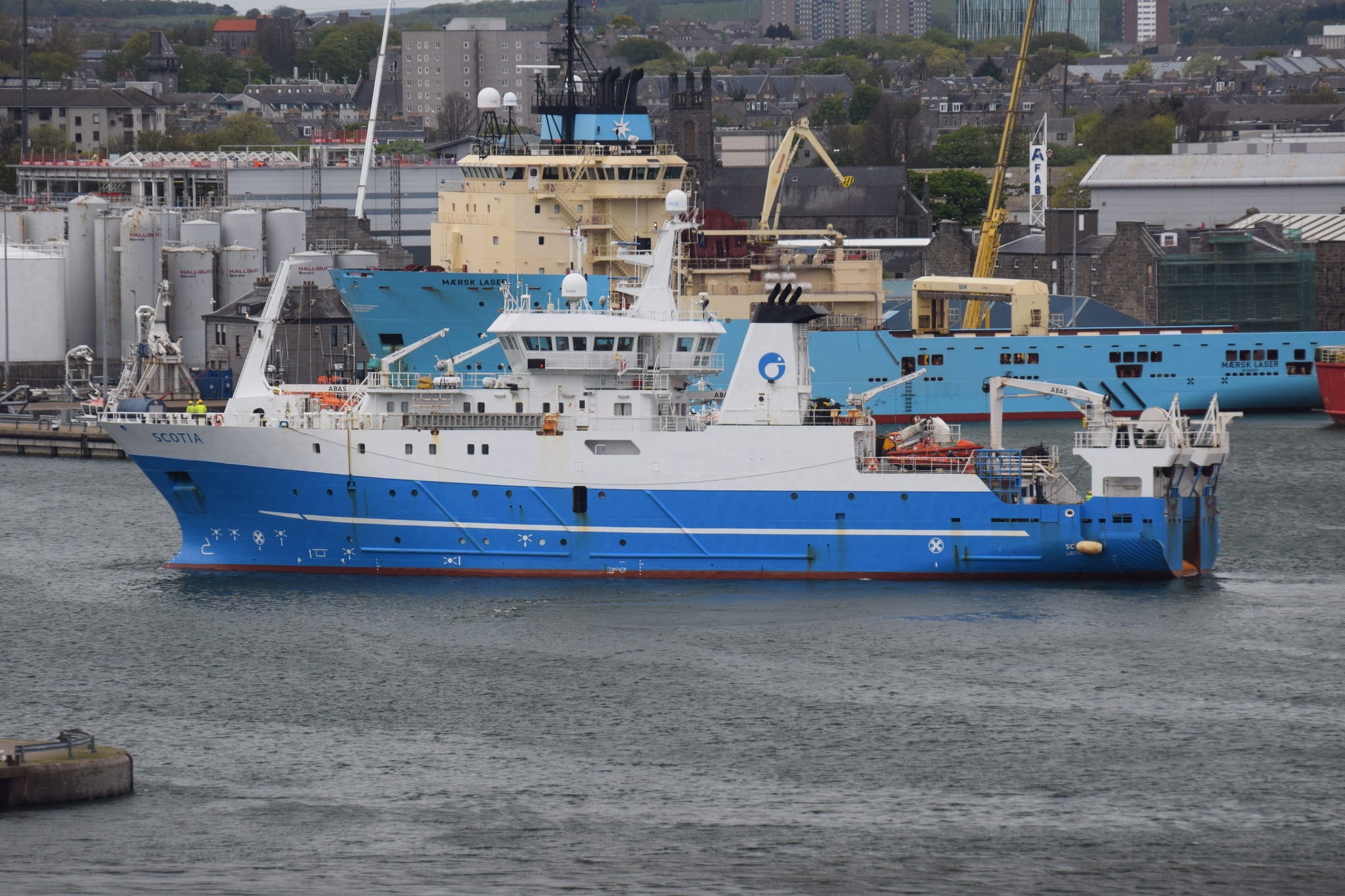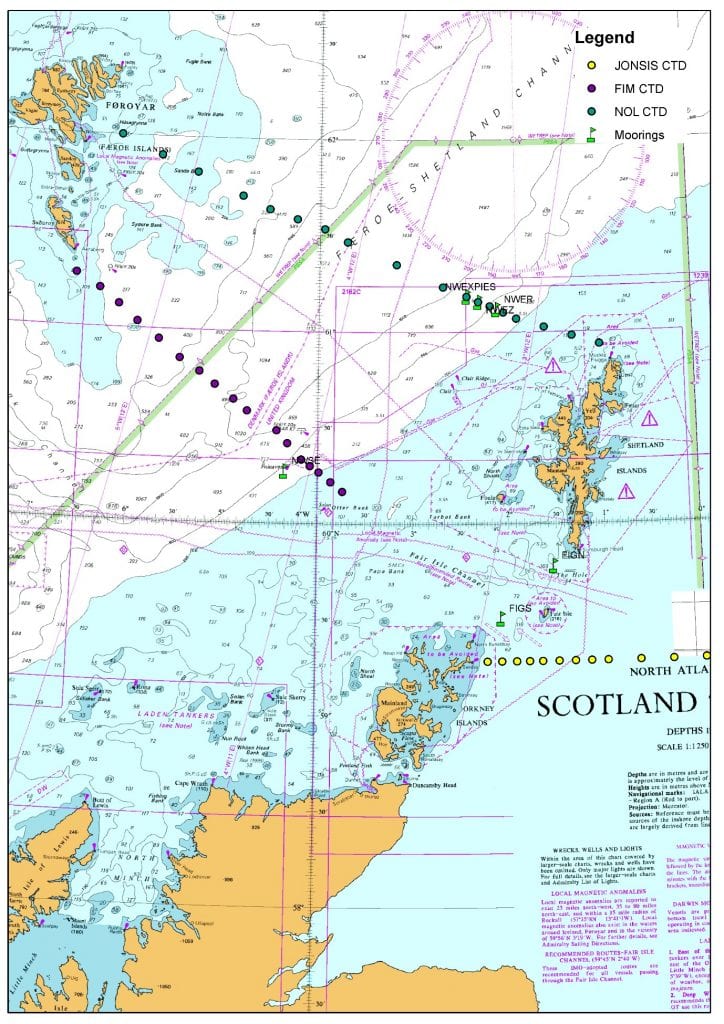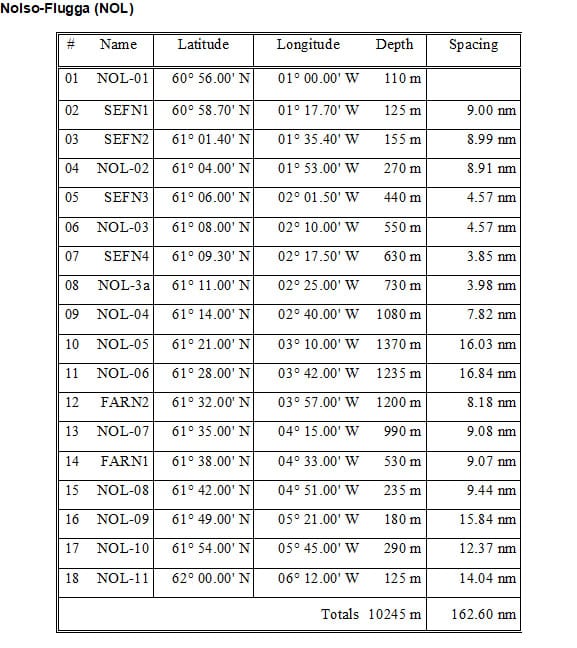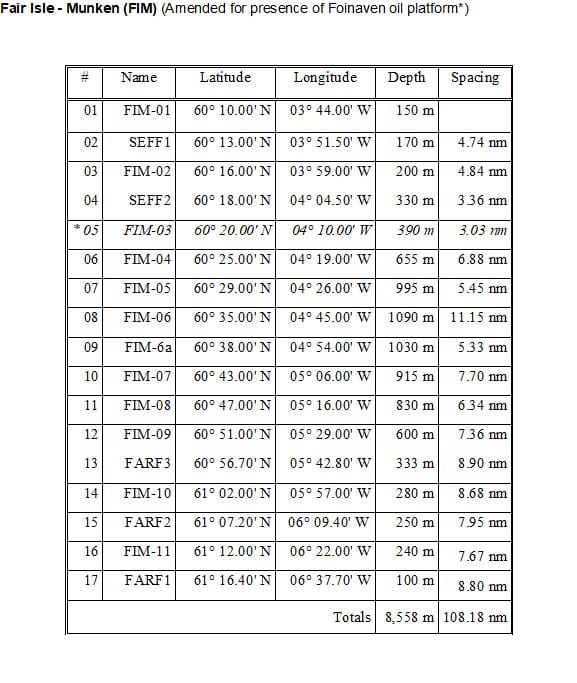Marine
Hydrographic Sampling in the Northern North Sea
October 15, 2019 by Marine Directorate Communications No Comments | Category Marine Directorate general, Marine Directorate Science, Marine Directorate Surveys, Research Vessel Surveys
MRV Scotia
Survey: 1519S Programme
Duration: 14-24 October 2019
Gear: Sea-Bird Conductivity Temperature Depth units (CTDs), RBR CTD, Acoustic Doppler Current Profilers (ADCPs) and current meter instrumentation, water filtering equipment, mooring equipment, chemistry sampling equipment.
Objectives:
- Test the SBE911 and CTD carousel (main CTD crane) and the SBE25 and Aquatracker (using plankton crane) in the Buchan Deep.
- Perform hydrographic sampling along the JONSIS long term monitoring section in the northern North Sea.
- Deploy two new ADCPs (FIGS and FIGN) in trawl-resistant seabed frames in the Fair Isle Gap.
- Recover, download and re-deploy one ADCP mooring (NWSE) at a position on Fair Isle – Munken (FIM) section.
- Deploy one new ADCP (NWER) on a single string mooring on the NOL section.
- Recover and download two ADCP moorings (NWEX and NWEZ) and redeploy one ADCP (NWEZ) on the Nolso – Flugga (NOL) section.
- Download data from PIES mooring on NOL section and then recover the instrument.
- Perform hydrographic sampling along the long term monitoring Faroe-Shetland Channel Nolso – Flugga (NOL) section.
- Perform hydrographic sampling along the long term monitoring Faroe-Shetland Channel Fair Isle – Munken (FIM) section.
- Take water samples for long term storage on Fair Isle – Munken or Nolso – Flugga section stations.
- Run the thermosalinograph throughout the survey.
- Run the VMADCP on all the standard sections.
- Opportunistically communicate with lost ADCP mooring on NOL section and potentially recover.
If weather/time permits:
- Repeat the JONSIS line at the end of the survey and extend to 001°30’ east (within UK waters).
- Perform fine scale VMADCP/CTD survey work on the JONSIS line (around 59° 17′ N, 001° 15′ W).
- Perform VMADCP/CTD survey work in the Moray Firth and/or Aberdeen Bay.
- Perform CTD line along the AlterECO lined.
Procedure:
On sailing from Aberdeen MRV Scotia will make passage to the Buchan Deep to test the CTD and carousel water sampler on the main CTD crane and the SBE25+Aquatracker CTD using the plankton crane. On completion of these tests, Scotia will head to the JONSIS section to carry out sampling with the CTD and carousel water sampler. Following completion of the JONSIS section Scotia will then make way to the Fair Isle Gap to deploy two ADCPs in trawl-resistant bed frames (during daylight hours).
Passage will then be made towards the NWSE mooring location near the Foinaven Development Area. The mooring will be recovered, serviced and re-deployed (depending on timing and weather conditions, this may be undertaken later in the survey). Scotia will then progress towards the NWER mooring location on the NOL section where the ADCP mooring will be deployed. The three existing moorings on the NOL section will then be recovered and the NWEZ will be re-deployed. For the PIES mooring, communication will be established prior to recovery enabling and data will be downloaded. Depending on conditions and timing, the order of these mooring activities may change.
Scotia will then make her way to the eastern end of the NOL section and start collecting long term monitoring samples and taking CTD profiles from the start of the section. On 1618S a mooring in an AL500 frame failed to surface. Communication with this lost mooring may be attempted (depending on condition/timing), but it is unlikely any communications will be established.
After the NOL section, Scotia will head to the western (Faroe) side of the FIM section to carry out standard CTD and water sampling along that line. (If the NWSE mooring was not recovered earlier in the survey, we will break the line to turn this mooring around).
Once that work is completed and if time allows, Scotia will carry out additional work (listed among the survey objectives) along the JONSIS line, in the Moray Firth and North Sea prior to her return to Aberdeen.
Mooring Positions (Recovery):
NWSE 60° 16.29′ N 004° 20.76′ W Short single string mooring
NWEZ 61° 09.30’ N 002° 17.52’ W Short single string mooring
NWEX 61° 11.00’ N 002° 25.00’ W Long (63 m wire) single string mooring
PIES 61° 10.99’ N 002° 24.92’ W PIES instrument frame on bed
Mooring Positions (Deployment):
NWSE 60° 16.29′ N 004° 20.78′ W Short single string mooring
NWEZ 61° 09.30’ N 002° 17.52’ W Short single string mooring
NWER 61° 07.00’ N 002° 05.75’ W Short single string mooring
FIGN 59° 46.70’ N 001° 32.20’ W AL-200 trawl-resistant bed frame
FIGS 59° 30.40’ N 002° 05.15’ W AL-500 trawl-resistant bed frame
Scientific Procedures:
It is expected that deployments of hydrographic equipment will be carried out with the CTD crane whilst the vessel is on station. The plankton crane will be used for the deployment of ADCP moorings in trawl-resistant frames (AL-200 and AL-500) and short single-string moorings. Longer single-string ADCP mooring deployments will be done from the trawl deck.
Two container laboratories will be required (one for water filtering and a dry container for communications with sampling equipment). Chlorophyll samples will be stored frozen in the freezer in the Fish House. Nutrient samples will be stored frozen in an empty freezer on the lower container deck.
Further Information:
Tags: Aberdeen Bay, Fair Isle, JONSIS, Marine Research Vessel, Moray Firth, MRV Scotia, research, sampling, science, Scotia, STEM, Survey







Leave a comment